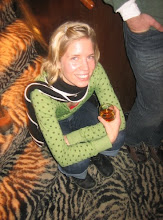Humans like to eat the eggs of other species. But most kinds of eggs aren't easily accessible from a regular grocery store or Farmer's Market and are seen as delicacies, like quail and duck eggs, caviar and roe. So we stick to the eggs from our beloved friend, the hen.
Figure 1A.
A chicken egg is made up of many small parts. (see Figure 1A.) The outer shell is slightly porous, and made primarily of calcium carbonate (CaCO3), the main component in pearls and sea shells (evolution, anyone?). The eggshell also has an outer and inner protective lining, like a little eggy sleeping bag. Aww. Eggs come in many shapes and sizes—and even colors! The color varies depending on the breed of the animal, and can range from brown to pink, white, yellow, green, and blue! (see Figure 1B.)
The white part of the egg is called the albumen, and there are technically a couple of layers of this even though it looks like one clear mass. The albumen is almost all protein (with some trace minerals) and is made up of about 90% water.
The pretty yellowish-orange part of the egg is the yolk, aka. vitellus. The vitellus contains fat, cholesterol, vitamins and minerals, protein and lecithin (an emulsifier).
Figure 1B.
I think the recipes that do eggs the most justice and really highlight their special diverse gifts are the recipes that use different parts of the egg throughout different parts of the recipe, like in soufflé, Eggs Benedict and Lemon Meringue Pie. Another favorite is the enamored Italian Timpano, a dish fit for kings, containing hard-boiled eggs, raw, beaten eggs, and eggs in its dough, all wrapped up like a drum. (see Figures 2A. and 2B.)
Figure 2A.
Figure 2B.
A special thanks to The Joy of Cooking* and my good friend Monsieur Wikipedia for enlightening me about some of this eggy stuff. The anatomy of an egg diagram is based on a diagram featured in Wikipedia in the category of "Egg (Food)."
*Rombauer, Irma S., Becker, Marion Rombauer, and Becker, Ethan. The All New Joy of Cooking. New York: Simon & Schuster, 1997.







No comments:
Post a Comment